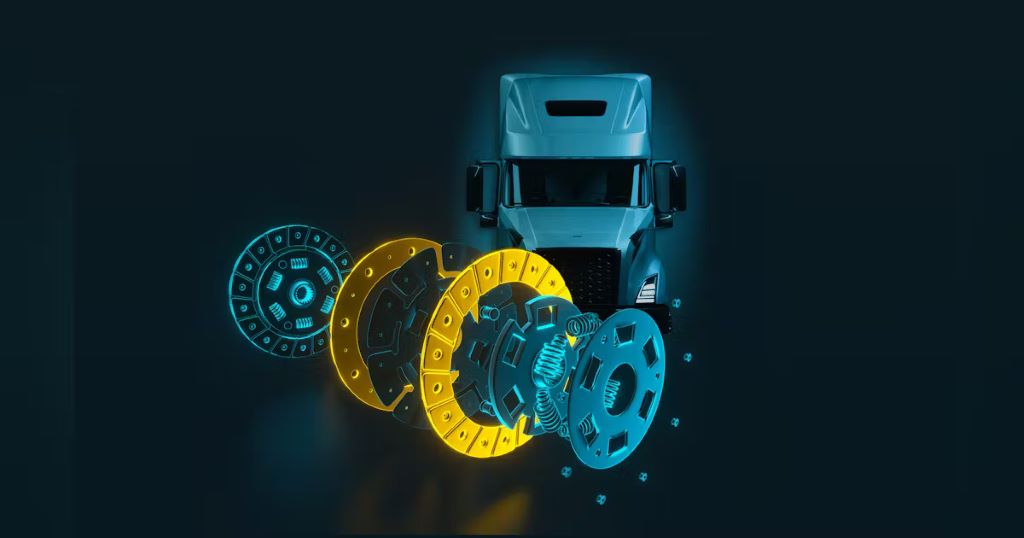
The heart of a heavy-duty truck lies in its powerful engine and the intricate mechanics that transmit that power to the wheels. The transmission and clutch play a vital role in this symphony of force, ensuring smooth gear changes and efficient power delivery. But even these robust components can succumb to wear and tear, leading to frustrating breakdowns and potentially expensive repairs.
This article explores some of the most common transmission and clutch issues encountered in heavy-duty trucks, along with helpful insights on identifying the problems and potential solutions.
Understanding the Teamwork: Transmission and Clutch
Before diving into specific problems, let’s establish a basic understanding of how these two components work together. The clutch acts as a bridge between the engine and the transmission. When you press the clutch pedal, it disengages the engine from the transmission, allowing you to smoothly change gears. Once the desired gear is selected, the clutch re-engages, transferring power from the engine to the transmission and ultimately to the wheels. The transmission itself manages the flow of power by selecting the appropriate gear ratio for the driving conditions.

Transmission Troubles: Signs and Solutions
- Gear Slipping and Grinding Noises: This is a telltale sign of a worn-out clutch disc, pressure plate, or internal transmission components. Slipping gears result in a loss of power and can damage the transmission further. Repairing this issue typically involves replacing the worn-out parts, which can be a significant undertaking.
- Delayed Engagement or Shifting: Difficulty getting the truck into gear or experiencing a lag before gear changes could indicate several problems. Low transmission fluid, worn synchronizers (components that help align gears for smooth shifting), or a faulty clutch linkage could all be culprits. Addressing low fluid is a simple fix, while worn synchronizers or clutch linkage issues might necessitate a visit to a qualified mechanic.
- Transmission Fluid Leaks: Transmission fluid is vital for lubrication and cooling the internal components. Leaks can lead to overheating, increased wear, and eventually, complete transmission failure. If you notice red fluid dripping under your truck, don’t ignore it! Identify the source of the leak and get it repaired as soon as possible.
- Overheating: Hauling heavy loads, continuous uphill climbs, or towing in hot weather can all contribute to transmission overheating. Symptoms include a burning smell, difficulty shifting, and a noticeable loss of power. Letting your truck cool down and avoiding excessive loads are crucial preventive measures. In severe cases, a mechanic may need to diagnose the cause and potentially replace the cooler or perform internal repairs.
- Unusual Noises: Whining, grinding, or clunking sounds coming from the transmission are a cause for concern. These noises can indicate problems with bearings, gears, or other internal components. Early detection is key to prevent further damage. If you hear unusual noises, have your truck inspected by a qualified mechanic to avoid a potential breakdown.
Clutch Concerns: Keeping the Connection Smooth
- Clutch Slipping: Similar to transmission slipping, a clutch that slips allows the engine to rev without a corresponding increase in vehicle speed. This is a classic sign of a worn-out clutch disc or pressure plate. While temporary adjustments might be possible, replacing the clutch components is often the most reliable solution.
- Clutch Sticking: If the clutch pedal gets stuck or doesn’t return to its original position after pressing, it could be due to hydraulic system problems or a malfunctioning clutch linkage. This can make gear changes difficult and potentially dangerous. A mechanic can diagnose the issue and recommend repairs, which might involve replacing faulty hydraulic components or adjusting the clutch linkage.
- Clutch Pedal Issues: A spongy or soft clutch pedal can indicate air in the hydraulic system or a failing master cylinder. Conversely, a stiff or hard-to-press pedal might suggest problems with the clutch linkage or a worn-out clutch disc. Having a qualified mechanic inspect the hydraulic system and clutch components is essential to address these issues.
Prevention is Key: Maintaining Your Heavy-Duty Truck
The best way to deal with transmission and clutch problems is to prevent them from occurring in the first place. Here are some essential maintenance tips:
- Regular Servicing: Regular maintenance schedules outlined in your truck’s manual are crucial. These include timely transmission fluid changes and inspections for leaks and wear.
- Proper Operation: Avoiding harsh gear changes, minimizing clutch riding (holding the pedal down while stopped), and not overloading the truck can significantly extend the lifespan of your transmission and clutch.
- Listen to Your Truck: Pay attention to any unusual noises, vibrations, or difficulty shifting. Early detection of problems can prevent costly repairs down the road.
When to Call in the Professionals
While some basic checks and maintenance tasks can be performed by mechanically-inclined individuals, addressing complex transmission and clutch issues is best left to experienced professionals with specialized tools and knowledge. Here are a few instances where professional intervention is critical:
- Major Repairs: Replacing clutch components, transmission teardowns, or any repairs requiring the removal of the transmission should be handled by a qualified heavy-duty truck mechanic.
- Diagnostic Checks: Advanced diagnostic tools are often needed to pinpoint the root cause of transmission problems, particularly problems with electronic controls and sensors in modern trucks. Your mechanic can run computer diagnostics to determine the problem.
- Warranty Considerations: If your truck is still under warranty, utilizing authorized dealers or mechanics is vital to avoid voiding the warranty.
Additional Considerations
- Rebuilt vs. New: In some cases, replacing a faulty transmission with a rebuilt unit might be a more cost-effective alternative to purchasing a brand-new transmission. Consult your mechanic about their recommendations for your specific truck and circumstances.
- Aftermarket Upgrades: If you engage in extreme hauling or demanding driving conditions, you can explore aftermarket clutch and transmission upgrades designed for heavy-duty applications. These might offer increased durability and performance.
- Driver Training: Even with a well-maintained truck, proper driver habits play a pivotal role in reducing wear and tear. Ensuring your drivers understand clutch operation, smooth shifting techniques, and avoiding overloading can significantly impact the longevity of your rig.
Conclusion
Transmission and clutch problems can be frustrating and disruptive for heavy-duty truck owners and operators. By understanding the signs, practicing preventive maintenance, and knowing when to seek professional help, you can extend the life of these important components and keep your truck running strong. Remember, early detection and proactive care are crucial in ensuring smooth operation and minimizing potential downtime.
